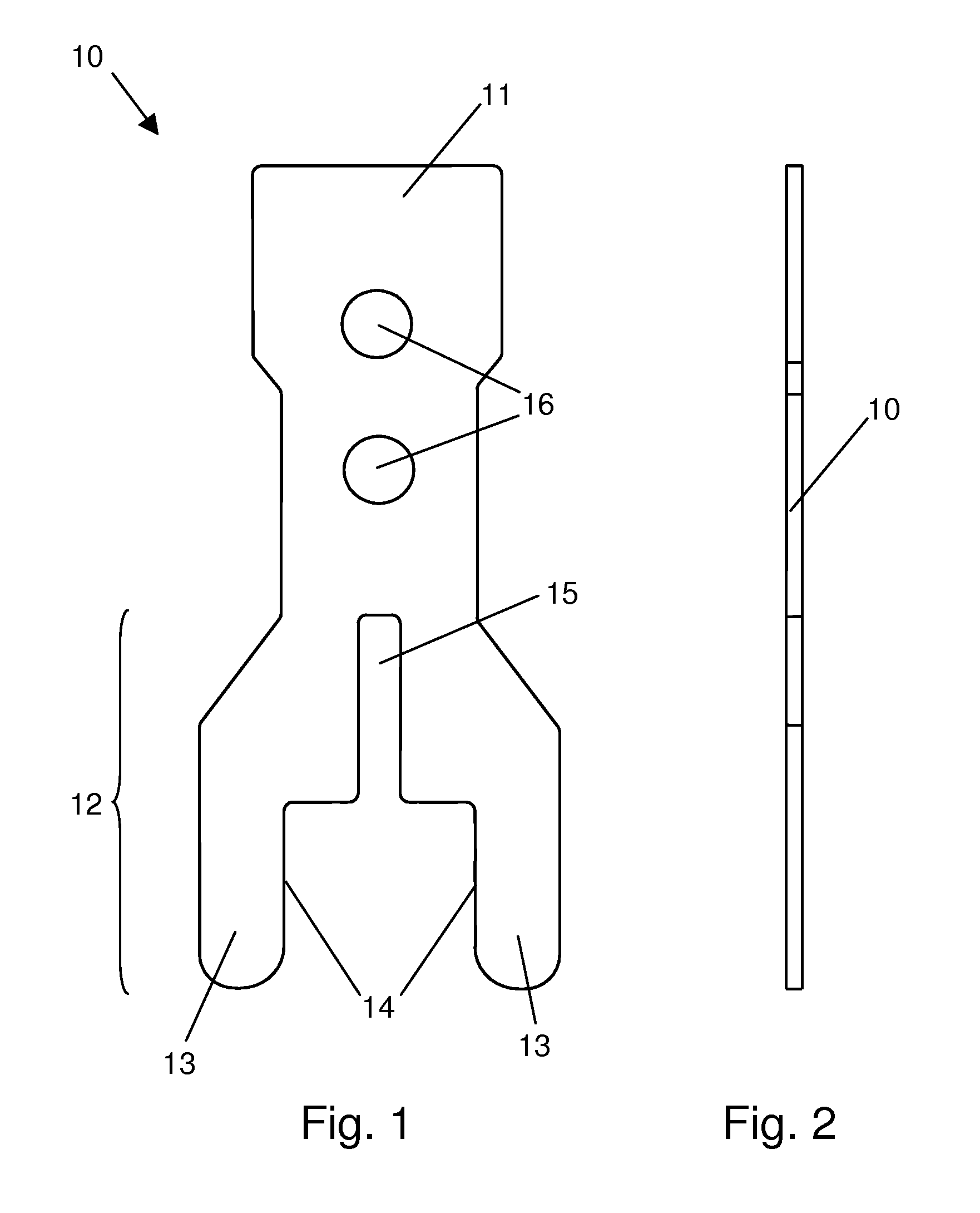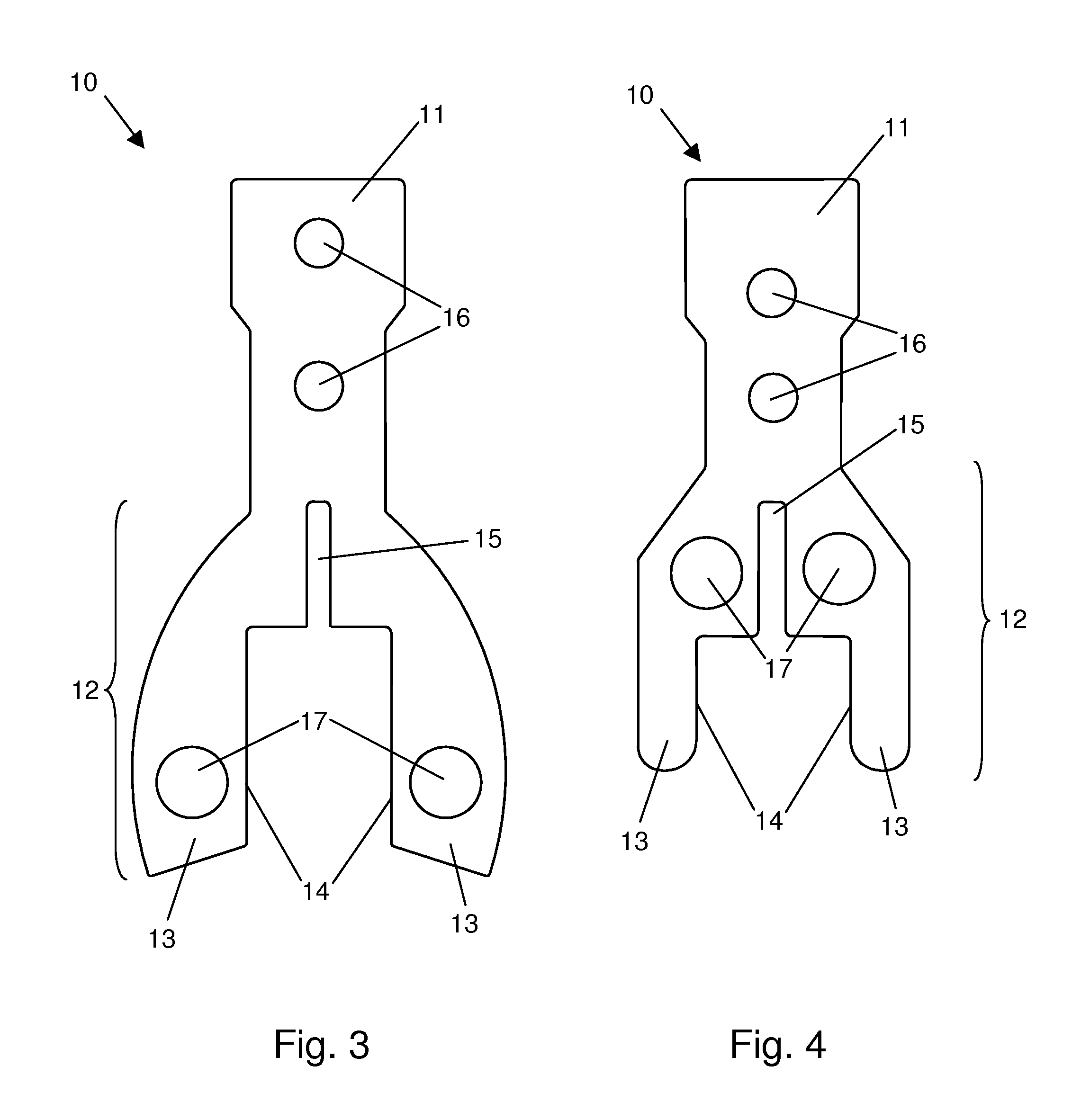Mounting Arrangement with Mounting Aid and Orthodontic Bracket
a technology for mounting brackets and brackets, which is applied in the field of mounting brackets with mounting aids and orthodontic brackets, mounting aids or jigs and associated orthodontic brackets, can solve the problems of significant errors in bracket position determination, uneconomical for an individual orthodontist to acquire such equipment, and high cost and complexity of computer techniques, so as to improve the fixation of caps, reduce the amount of material used, and increase the elastic effect of slots
- Summary
- Abstract
- Description
- Claims
- Application Information
AI Technical Summary
Benefits of technology
Problems solved by technology
Method used
Image
Examples
first embodiment
[0046]FIG. 1 shows a top view of an inventive aid 10 on a greatly enlarged scale. It should be noted in this relation that the components used for the inventive mounting arrangement, that is, the inventive mounting aid and the inventive bracket, are relatively small components, and accordingly all of the components are shown on an enlarged scale in all of the figures. The overall length of the mounting aid 10, for example, is approximately 10 mm; its greatest width is approximately 5 mm. The other details of the component are of corresponding size.
[0047]Mounting aid 10 is produced from a sheet metal strip with a thickness of about 0.2 mm. It comprises a first end 11, a central part, and a second end 12. In the embodiment shown in FIG. 1, mounting aid 10 is axially symmetric with respect to a center axis, which runs from first end 11 to second end 12. Second end 12 comprises two parallel side pieces 13 of essentially the same length, each of which comprises long inner sides 14, which...
second embodiment
[0049]FIG. 3 shows a top view of an inventive mounting aid according to a The configuration of first end 11 is essentially identical to the configuration of mounting aid of FIG. 1, only the shape of side pieces 13 is different. It can be seen that side pieces 13 comprise a curved shape along their outer sides and that there is a round opening 17 at each end. A spreading pliers or a similar tool can engage in these openings 17 to move the side pieces apart and thus to support the process of pushing the aid onto, or of removing it from, a bracket. The shape of opening 17 does not have to be round; other suitable shapes such as elliptical, rectangular, polygonal, or the like can also be used.
[0050]FIG. 4 shows a top view of an inventive mounting aid according to another embodiment, wherein second end 12 comprises an opening 17 on each of the two sides of the slot 15, into which a spreading pliers as described above can positioned and engaged. In contrast to the exemplary embodiment sh...
PUM
 Login to View More
Login to View More Abstract
Description
Claims
Application Information
 Login to View More
Login to View More - R&D
- Intellectual Property
- Life Sciences
- Materials
- Tech Scout
- Unparalleled Data Quality
- Higher Quality Content
- 60% Fewer Hallucinations
Browse by: Latest US Patents, China's latest patents, Technical Efficacy Thesaurus, Application Domain, Technology Topic, Popular Technical Reports.
© 2025 PatSnap. All rights reserved.Legal|Privacy policy|Modern Slavery Act Transparency Statement|Sitemap|About US| Contact US: help@patsnap.com



